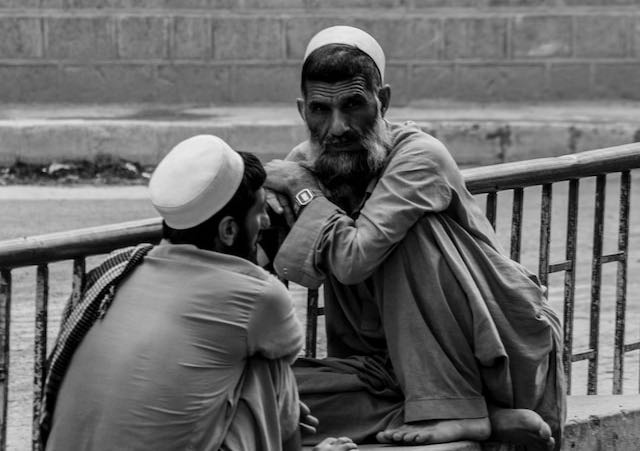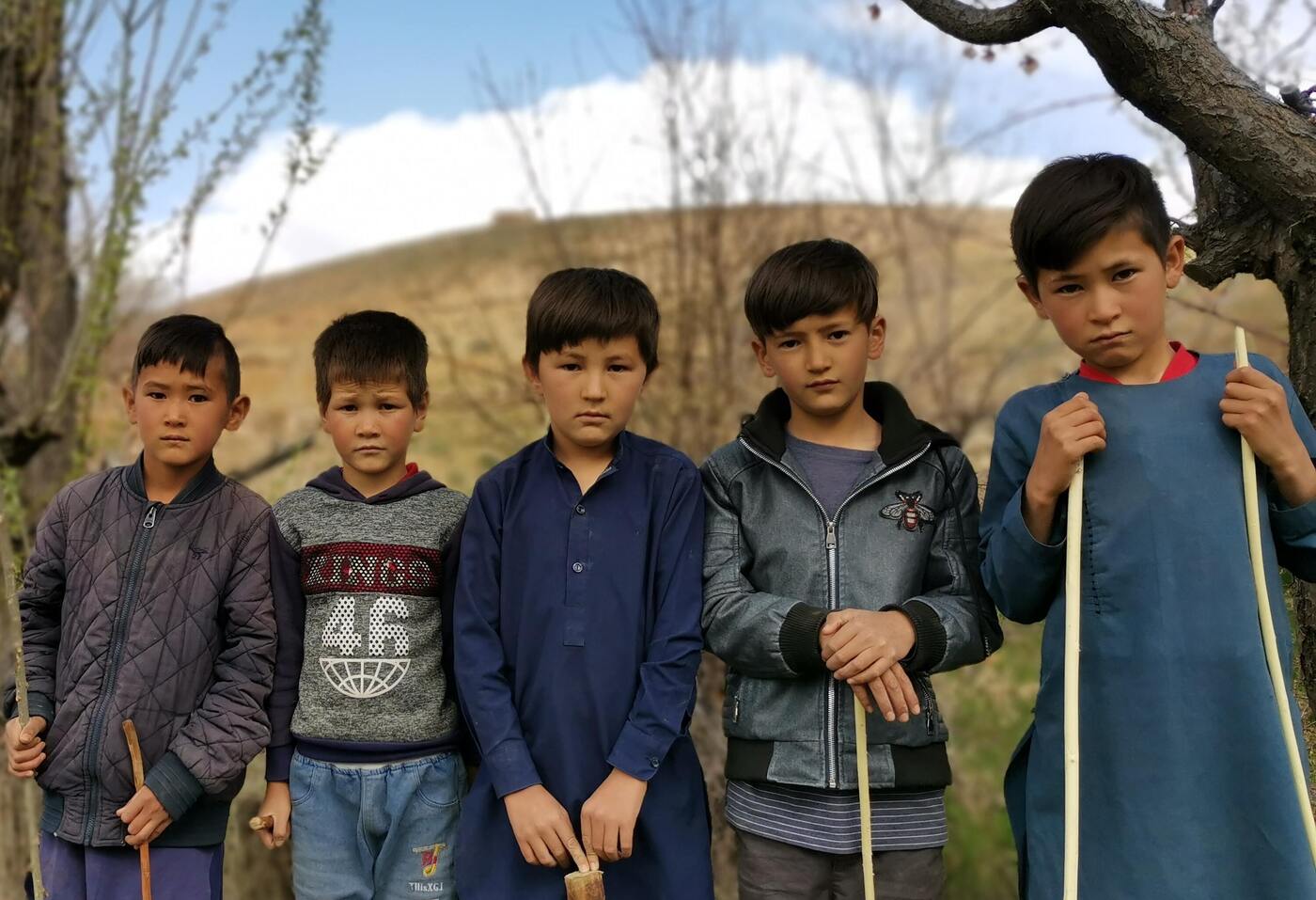The stereotypical profile of Afghan/Pathan/Pashtun/Pakhtun as militant, recalcitrant, rustic, volatile, patriarchal etc. has a long history in colonial and post-colonial literatures and media. In this post, Barkat Shah Kakar examines this image of the ‘Pashtun’, and how colonial tropes have percolated into modern Pakistan’s engagement with, and representation of, them.
In the wake of the two decade-long Cold War, and the attack on the Twin Towers on 9/11 that triggered the US and NATO military intervention in Afghanistan, Afghans, Pathans, Pashtuns or Pakhtuns are no longer alien to the wider world. Living on crescent curves on both sides of the Pak-Afghan border, Pashtuns make up the largest ethnic group (almost 52 per cent of the total population) in Afghanistan, and at 18.24 per cent, are the second largest ethnic group in Pakistan.
During British colonial times, Pashtuns (usually referred to as ‘Pathan’ in most colonial documents) in almost all regions posed unparalleled resistance, which led to three Anglo-Afghan Wars and consistent hostilities across the borders and localities till the independence of the Indo-Pak subcontinent in 1947. The hostile contact between the colonialists and Pashtuns is reflected in the colonial literature, memoirs, travelogues, administrative reports and ethnographic narratives produced between the 19th and mid-20th century. Analysis of these accounts shows that Pashtuns are presented with exotic and demonic otherness. Mountstuart Elphinstone, in his An Account of the Kingdom of Caubul, and Its Dependencies, in Persia, Tartary and India: Comprising a View of the Afghaun Nation, and a History of the Dooraunee Monarchy (1842) singled out Pashtuns as manlike, tribal, medieval and martial. The same tropes, along with substantial demonic attributes, have been added by others in different phases of British rule. The travelogues and literature of Alexander Burnes, Charles Masson, Arthur Conolly, accounts of Lady Florentia Sale, Robert Warburton, Josiah Harlan, S. S. Thorburn, Winston Churchill, Rudyard Kipling, and many more presented Pashtuns as the most turbulent, wild, unruly, leaderless, anti-women, simpleton and deceitful creatures under the stars.
These tropes permeated through the porous chronicles of history and travelled beyond the colonial era; once created by the British Raj’s orientalists, these stereotypes have been reproduced by the global media, academic research and policy narratives during the last several decades.
*
The exotic and demonic depiction of Pashtuns in Pakistani literature, academia, textbooks, newspapers, TV channels, films and policy narratives is not an exception but a rule. Prior to the advent of private TV channels, Pakistani theatre and films seldom presented Pashtun characters with modern attributes; their characterisation was always conditioned to low wages, illiterate watchmen, gunmen, or naïve, funny idiots with no intelligence. In the last two decades, Urdu soap operas and late night shows on private TV channels present ridiculing content that paint Pashtuns as violent extremists, human traffickers, homosexuals, and Taliban sympathisers.
Recent Urdu dramas on television like ‘Sang-e-Mah’ (2022), ‘Sang-e-Marmar’ (2016) and ‘Meray Hamnasheen’ (2022) earned millions of views through peddling such distorted images of Pashtun culture, crafting their storylines on outdated stereotypical themes. These stories reveal that violence, misogyny, use of drugs, rivalries between cousin lineages, use of guns and brutal force has cultural and social legitimacy in contemporary Pashtun culture.
Presenting Pashtun characters as simpletons and naïve, always the butt of jokes, is an old motif adopted by current dramas and films from TV dramas, films, and live Punjabi theatres shows from the 1980s–90s. These negative attributes have been exacerbated with adding drugs and ammunition trafficking to the profile in Pakistan. ‘Bulbulay’ (2009), a popular Urdu sitcom on ARY channel, ridicules a Pashtun character who offers a gift to Nabeel (the protagonist and producer). Nabeel’s reply: ‘What could be his gift? Either bomb or Naswar (chewing tobacco)!’.
Similarly, Pakistani movies by seasoned directors like Shoaib Mansoor single out Pashtun culture as the root cause of extremism and violence in Pakistan. Mansoor’s ‘Khuda kay Liye’ (2007), a trend-setting movie, rationalises the narrative that the waves of extremism in Pakistan are not the outcome of actions of extremistist organisations but Pashtun culture which, by design, is extremist, misogynist, violent and uncivil. ‘Verna’ (2017) and ‘Bol’ (2011), also directed Mansoor, also contain similar content. Another movie, ‘Karachi se Lahore’ (2015), outrightly associates Pashtuns with homosexuality. Similar motifs are also found in 20th century (and contemporary) Urdu short stories, novels and travelogues.
Textbooks in state schools are no exception. There are several cases of the negative stereotyping and demonic othering of the marginal ethnic identities in state school textbooks of Punjab province. Textbooks, particularly Urdu-language social studies ones, present Pashtun culture intertwined with weapons, revenge and medieval tribal values. A story of Spingul, a brave Pashtun girl, in the Year 6 Urdu textbook of the Balochistan Textbook Bureau, paints the image of an ideal Pashtun girl who provides shelter, food and protection to a wounded villain, knowing that he was the murderer of her father. It is a classic attempt to re-emphasise the tribal self-image of young students and mute their civic sense and responsibilities; providing sanctuary and food to criminals is portrayed as a virtue of Pashtun culture. On the other hand, non-Pashtun students are told that Pashtun culture still stands in the pre-modern tribal value system regulated by ‘cousin rivalries’; similarly, in an Urdu textbook for Year 3 children, a poem reduces Pashtuns as the guards of frontiers.
*
These stereotypes — perpetuated with consistency and zeal — have created a sense of otherness, alienation and discrimination in the social and political landscape of the country. Unfortunately some political parties have borrowed these tropes to construct their political narratives; former Prime Minister Imran Khan said in October 2021 that Pashtuns are sympathisers of Taliban. Mr Khan ignores the facts that the Pashtun community on both sides of the border are the prime victims of the good and bad Taliban. In April 2023, Mr Khan (addressing a mass procession) said: ‘Allah created two types of creatures in this world, Pathan (Pashtun) and Insaan (humans)’. It was one of the most negative opinions that was aimed to provoke Khan’s Pashtun followers to incite violence against the state’s institutions.
The same perception was expressed by Munir Akram, Pakistan’s Permanent Representative at the United Nations earlier (in February 2023). Mr Akram said that the Taliban’s ban on women’s education and work in Afghanistan is not a religious issue, and is rooted in Pashtun culture, that as part of Pashtun culture it is enshrined that women should stay at home (for which he later apologised).
The stereotypes about Pashtuns perpetuated through cultural, educational and political institutions have negatively affected the social fabric in Pakistan. The persecution of Pashtuns in Islamabad, Punjab and Sindh is not accidental. During 2010–18, the racial profiling of Pashtuns in these regions was a chronic issue: the district administration in Punjab started combing operations against Pashtuns businessmen, skilled and unskilled labourers. Market owners and trade union leaders were summoned to keep an eye on Pashtun folk around them. Fake encounters of Pashtuns in Karachi during 2013–19 were also an outcome of the discourse created over the years.
Stereotyping causes mistrust, prejudice and discrimination. In the wake of crises, and meagre socio-economic conditions, ethnic divisions can further worsen the situation. It is high time that Pakistani lawmakers, media, opinion leaders, and its privileged urban polity start reimagining marginal identities and unlearn the world-view that reincarnates the colonial mind-set of ‘us’ and ‘them’.
*
The views expressed here are those of the author and do not represent the views of the ‘South Asia @ LSE’ blog, the LSE South Asia Centre or the London School of Economics and Political Science. Please click here for our Comments Policy.
This blogpost may not be reposted by anyone without prior written consent of LSE South Asia Centre; please e-mail southasia@lse.ac.uk for permission.
Banner image © Shuttergames, ‘A Meaningful Conversation’, Peshawar, 2020, Unsplash.
*








Excellent and thought provoking article for those who blindly use thier narrow minded approach towards Pashtun. Your hardwork definitely yields positive impacts. It will be good if you translate it in urdu and Pashto, to get more readers.
Masterpiece! We need such scholar who explore this topic… Keep shinning
A thought-provoking article exposing the discriminatory attitude of colonialists being followed by its unclaimed proprietors – the Punjabi media.
One must propagate the alternate, actually the real, narrative of Pashtun identity, socio-cultural traditions and way of life based on routine life in Pashtun region instead of derogatory literature produced by colonialists-cum-orientalists.
Pashtuns are one of the most resilient nations on earth.
The ill-wishers of Afghan nation have always misrepresented Afghan’s culture and history. Your efforts in illustrating real topography of Afghan nation, are really of a great appreciation and an initialization of a new chapter for other writers/ researchers.
Truly enlightening and thought provoking article, exposing hypocrisy of the colonisers and Pakistani media. Keep shining Dr Sab.